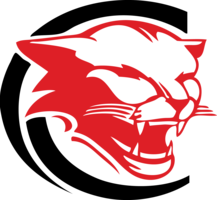Green Screen Videos- All Grades
Video production is one of the favorite activities of our Crestomere students! We use our green screen for nearly everything: social studies, LA, music, drama, and science! The document below entitled "Technology at Crestomere School" contains information about how we built our green screen, tips and tricks for filming, and how we edit using iMovie. Enjoy the links provided which display some of our green screen talents!
Green Screen Resources:
Read about Green Screen "Tips and Tricks" in Technology at Crestomere School
View Mrs. Ingram's PPT Presentation on successful Green Screen Productions in Go Green Screen Web Version
End of the Middle Ages Docu-Drama Project (Grade 8 Humanities)
This project was done to combine LA with Social Studies for the first section of the Renaissance unit. The students read through the teacher-created "How the Middle Ages Ended" booklet as a class, highlighting key points and noting where more research is needed. When the booklet is finished and all related video content is complete, discuss the project with the students and set up expectations. Make groups and assign topics to each group, measuring group dynamics, FOIP allowances, and strengths/weaknesses. Students may then have a few classes to research and build a script, a day to practice and organize props, and then the students will film the skits using a green screen. The students or the teacher can edit the movie to create a docu-drama, and then post it on YouTube!
- How the Middle Ages Ended Booklet
- Middle Ages Docu-Drama Project
End of the Medieval Ages Docu-Drama Video (video unavailable at the time)
Economic Systems (Grade 9 Social)
Learn about the differences between Mixed, Market, and Planned Economies!
The Age of Exploration (Grade 7/8 Humanities)
Join the 7/8 Humanities class as they travel through time and across the Atlantic to explore the New World!
The Age of Exploration (video unavailable at the time)
Marketing Techniques (Grade 9 Social Studies)
How does consumerism influence us? How do commercials work? Learn about marketing techniques in this tongue-in-cheek video from our Grade 9 social stars! (Video currently unavailable.)
The Nervous System (Grade 7/ 8 Science)
The 7/8s sang, danced, and virtually traveled through the nervous system using green screen technology! (Video unavailable due to music copyright issues.)
